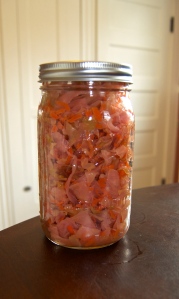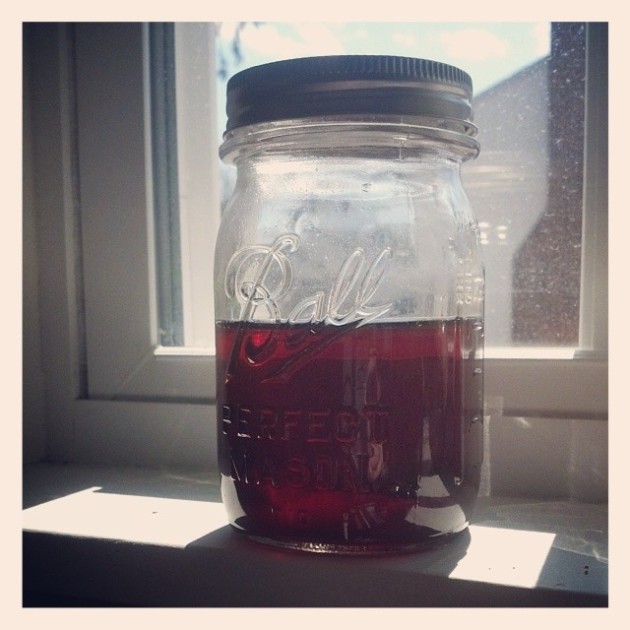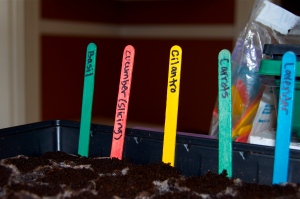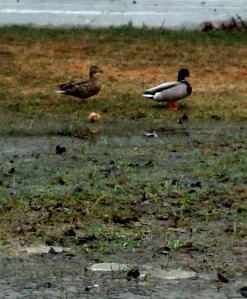And we almost have a home for them.
Nate has been working so hard, giving up several weekends in a row, to get this coop and run completed, and it is really finally coming together. Especially since this is what it looked like three weeks ago.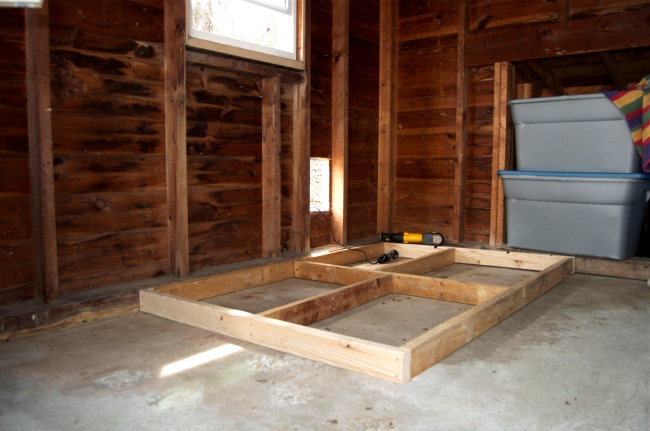 Chickens are simple creatures, but they probably wouldn’t be happy scratching the concrete floor of our garage for worms or bending their little chicken knees (homonymically speaking, this is also the language chickens speak: Chickenese) and jumping up to get out the pop hole, let alone sharing their space with so many power tools. So we made them this.
Chickens are simple creatures, but they probably wouldn’t be happy scratching the concrete floor of our garage for worms or bending their little chicken knees (homonymically speaking, this is also the language chickens speak: Chickenese) and jumping up to get out the pop hole, let alone sharing their space with so many power tools. So we made them this.
This is our poultry palace. OK, so it’s a plywood palace, but it’s both ecologically and economically constructed, and it meets our strict city ordinance for backyard chickens…I think. We have yet to receive our permit from the city, which costs $25 and expires annually. It also requires a photo of the coop and a plan of the run. They don’t mess around. Permit or not, the coop already has covered some of the common mistakes of first-time flock tenders, like external access to the nest boxes for ease of egg collection. No poop on our boots! We got the material for the nest boxes, the door, and the window (this one here being modeled by the handsome carpenter himself)
from my mother’s basement. Nate sanded, painted, and fitted them. We also got some of the lumber reclaimed, but the flooring, walls, and roost are new materials. Here’s a peek inside. You can see the roost, which for now is a wide dowel, but come winter may be changed out for a 2×4, and the easy-to-clean linoleum floor. Nate still has to build the ramp for the pop hole, as well as install the predator-proof sliding door for it, but we have supplies!
Nate still has to build the ramp for the pop hole, as well as install the predator-proof sliding door for it, but we have supplies!

The pine shavings are for the floor of the coop and nest boxes, and we’ll be getting a bale of hay as well, to be shared with the run. Our little eight-weekers are currently being fed chick starter crumbles and being introduced to grower crumbles, which is what I bought for them. They will stay on the grower crumbles for another few weeks until they’re big enough to swallow grower pellets. Then, at 18 weeks, we can move them on to layer pellets in preparation for eggs! They will also be dining on compost pile fare, yard foraging, and occasionally oyster shells. I ordered a hanging metal water fountain with a pitched roof to discourage roosting and two feeders, a metal one for the corner of the run and a plastic, suspended one with sections to discourage scratching and pooping in it for the coop. Apparently you can also purchase toys for your chickens, like a hanging ball with holes filled with greens, so they can play lettuce tether ball, I guess.
Finally, Nate recruited friends to help him with the run, which looked like this for a good long while.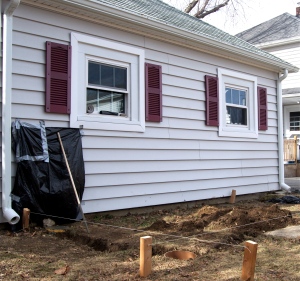 This is mostly because his first assistant ended up doing this instead of pouring concrete like he was supposed to. It’s so hard to find good help these days.
This is mostly because his first assistant ended up doing this instead of pouring concrete like he was supposed to. It’s so hard to find good help these days. After a lot of concrete, digging pernicious tree roots out of trenches, framing, roofing, and wire stapling, the run is about half finished. I will save more recent photos for the final product, chickens included.
After a lot of concrete, digging pernicious tree roots out of trenches, framing, roofing, and wire stapling, the run is about half finished. I will save more recent photos for the final product, chickens included.  We pick up our hens on May 10th, so Nate will sacrifice one more weekend to this project, which has been educational, laborious, fun, and mostly, anticipatory. We are so excited to meet our little feathered females. They already have names. But, you’ll have to wait to hear those too.
We pick up our hens on May 10th, so Nate will sacrifice one more weekend to this project, which has been educational, laborious, fun, and mostly, anticipatory. We are so excited to meet our little feathered females. They already have names. But, you’ll have to wait to hear those too.

